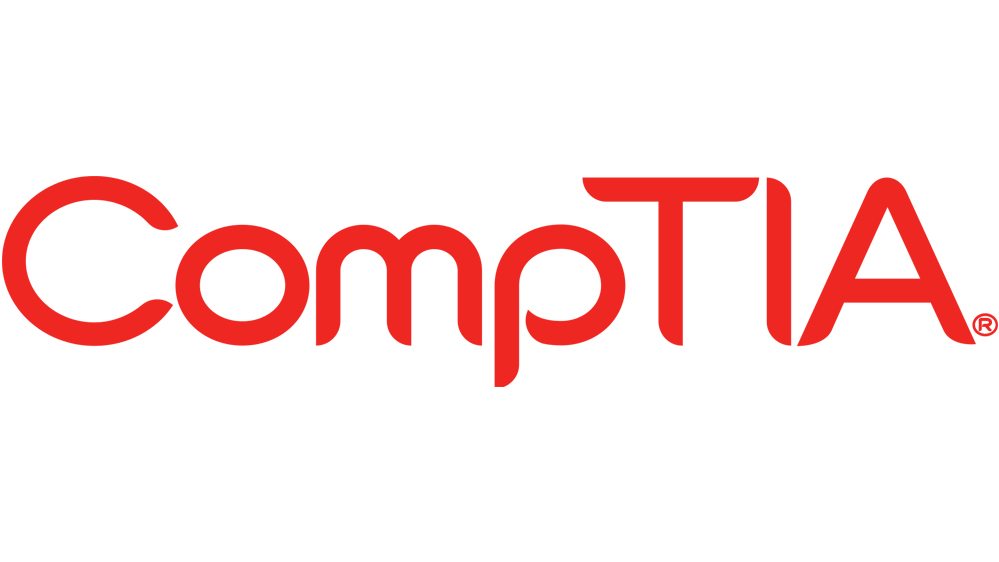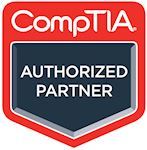CompTIA Network + Course with exam included
Complete CompTIA Network + Course with Exam included
IT Certify
Summary
Limited Special offer ends 31st May 2024**
Pay with a single payment or spread over monthly...
- Exam(s) / assessment(s) is included in price
Add to basket or enquire
Overview
The CompTIA Network + course forms the basis of any IT career and is essential in proving your skills in building and protecting Networks. Here you will learn Network Architecture, Operations and Security
These skills are needed by all IT businesses and command an average salary of £38K.
This package includes the CompTIA Network + course and exam fee giving you complete peace of mind that everything is included - all with 6 months access.
CompTIA Network + Module Outline
The CompTIA Network + course will enhance and develop your career in IT infrastructure and prove your different elements of Network skills:
• Networking concepts
• Network infrastructure and deploying common network components
• Network operations and supporting a production network
• Network security concepts and implementing basic network security
• Network troubleshooting
Networking concepts:
- Intro Network Plus N10-007
- Basic networking
- Activity basic networking
- OSI model
- Exploring the OSI model act
- Protocol and ports
- Activity examining protocols and ports
- Connection oriented vs connectionless
- Activity comparing TCP and UDP
- Internet protocol (IP)
- Activity examining the lower layer protocols
- Layer 7 remote control protocols
- Layer 7 file transfer protocols
- Layer 7 file transfer protocols
- Layer 7 messaging protocols
- Activity examining messaging protocols
- Layer 7 web traffic protocols
- layer 7 streaming media protocols
- Layer 7 infrastructure management protocols
- Switching
- Activity creating collision and broadcast domains
- Interface properties and segmentation
- Activity creating a basic network segment
- Switching part 2
- Activity switching
- Switching loop management
- Activity managing switching loops
- VLANs
- Activity creating VLANs
- Routing
- Activity examining ARP
- IP addressing basics
- Activity configuring IP
- Routers
- Activity setting up a router
- Routing basics
- Activity adding static routes
- VLAN routing
- Activity routing between VLANs
- NAT/PAT
- Activity configuring NAT/PAT
- Routing protocols
- Activity configuring a routing protocol
- Firewalls
- Activity configuring firewalls
- Advanced switching and routing concepts
- Activity exploring IPv6
- Performance concepts
- IP addressing
- Subnetting
- Activity learning to subnet
- Address assignments
- Network types and topologies
- Wireless topologies
- Network types
- Technologies that facilitate the internet of things (IoT)
- Wireless technologies
- 802.11 standards
- Wi-Fi frequencies
- Wi-Fi antenna concepts
- Bluetotoh
- Cellular
- Activity using an RF spectrum analyzer
- Cloud concepts
- Activity exploring cloud services
- Network services
- Activity setting up DNS
- DHCP service
- Activity setting up DHCP
- NTP
Infrastructure:
- Infrastructure
- Activity testing a fiber optic cable
- Plenum vs. PVC
- Activity crimping on an RJ-45 connector
- Transceivers
- Activity terminating cable to a 110 block
- Copper cable standards
- Activity creating a crossover cable
- Ethernet deployment standards
- Network device placement and installation
- Repeater
- Router
- Modem
- Activity setting up a WAP
- Firewall
- Media converter
- Advanced network devices
- Wireless controller
- Proxy server
- Activity configuring proxy settigns
- VPN concentrator
- Virtual networking components
- Network storage types
- WAN technologies
- Transmission mediums
- Activity configuring WAN links
- Termination
Network Operation
- Change management
- IDF-MDF documentation
- Labeling
- Logical vs physical diagrams
- Network operations documentation
- Rack diagrams
- Standard operation procedures
- Using documentation act
- Wiring and ports locations
- Continuity and disaster
- MTTR mean time repair
- Recovery
- Backing up your data act
- Event management
- Metrics
- Scanning monitoring patching
- Testing the network act
- HTTPS management
- Out of band management
- RDP
- Remote access methods
- Remote file access
- making remote connections act
- SSH
- VNC
- Policies and best practices
- Creating policies and procedures act
Certification
CompTIA Network+
Course media
Description
Network Security
Physical Security Devices
• Detection
• Prevention
Authentication and Access Control
• Authorization, Authentication, and Accounting
• Multifactor Authentication
• Access Control
• Activity: Examining Access Control Mechanisms
Basic Wireless Network Security
• WPA
• WPA2
• TKIP-RC4
• CCMP-AES
• Authentication and Authorization
• Geofencing
• Activity: Demonstrating the Need for Wireless Security
Common Network Attacks
• DoS
• Social Engineering
• Insider Threat
• Logic Bomb
• Rogue Access Point
• Evil Twin
• War-driving
• Phishing
• Ransomware
• DNS Poisoning
• ARP Poisoning
• Spoofing
• Deauthentication
• Brute Force
• VLAN Hopping
• Man-in-the-Middle
• Exploits vs. Vulnerabilities
• Activity Conducting a Phishing Attack
Network Device Hardening
• Changing Default Credentials
• Avoiding Common Passwords
• File Hashing
• Generating New Keys
• Activity Supporting Secure Authentication and Encryption
• Upgrading Firmware
• Patching and Updates
• Disabling Unnecessary Services
• Using Secure Protocols
• Disabling Unused Ports
Common Mitigation Techniques
• Signature Management
• Device Hardening
• Change Native VLAN
• Switchport Protection
• Network Segmentation
• Privileged User Account
• File Integrity Monitoring
• Role Separation
• Restricting Access Via ACLs
• Honeypot/Honeynet
• Penetration Testing
• Activity: Implementing a Honeypot
Network Troubleshooting and Tools
Network Troubleshooting Methodology
• Identify the Problem
• Establish a Theory of Probable Cause
• Test the Theory to Determine the Cause
• Establish a Plan of Action to Resolve the Problem and Identify Potential Effects
• Implement the Solution or Escalate as Necessary
• Verify Full System Functionality and , if Applicable, Implement Preventive Measures
• Document Findings, Actions, and Outcomes
Using the Appropriate Tool
• Hardware Tools – Basic Hand Held
• Hardware Tools – Analyzers
• Activity: Troubleshooting with Hardware Tools
• Software Tools – Testers and Analyzers
• Activity: Troubleshooting with Software Tools
• Software Tools – Command Line
• Activity: Using Command Line Tools
Troubleshoot Wired Connectivity and Performance
• Signal Issues:
• Attenuation
• Latency
• Jitter
• Crosstalk
• EMI
• Activity Troubleshooting Signal Problems
• Physical Issues:
• Open/short
• Incorrect pin-out
• Incorrect Cable Type
• Bad Port
• Damaged cable
• Bent pins
• Transceiver Issues:
• Transceiver mismatch
• TX/RX reverse
• Duplex/speed mismatch
• Activity: Troubleshooting Transceiver Problems
• Traffic Flow Issues:
• Bottleneck
• VLAN mismatch
• Network connection LED status indicators
Troubleshoot Wireless Connectivity and Performance
• Signal Loss:
• Attenuation
• Reflection
• Refraction
• Absorption
• Latency & Jitter
• Antenna Issues:
• Incorrect antenna type
• Incorrect antenna placement
• Incorrect WAP type
• WAP Issues:
• Interference
• Channel overlap
• Overcapacity
• Distance limitations
• Frequency mismatch
• Power levels
• Signal-to-noise ratio
• WAP Misconfiguration:
• Wrong SSID
• Wrong passphrase
• Security type mismatch
• Activity Troubleshooting WAP Issues
Troubleshoot Common Network Service Issues
• Common Network Issues:
• Physical Connectivity
• Incorrect IP Address
• Incorrect Gateway
• Incorrect Netmask
• Names Not Resolving
• Untrusted SSL Certificate
• DCP Issues:
• Duplicate IP Addresses
• Expired IP Address
• Rogue DHCP
• Exhausted DHCP Scope
• Firewall/ACL Issues:
• Blocked TCP/UDP Ports
• Incorrect Host-based Firewall Settings
• Incorrect ACL Settings
• Advanced Network Issues:
• DNS Server Issues
• Duplicate MAC Addresses
• Incorrect Time
• Unresponsive Service
• Hardware Failure
• Activity Case Study: Troubleshooting an Unusual Network Issue
Access through our world class online portal
Navigation and Controls
Our self paced training programmes allow you to study anywhere at any time. Pause, Rewind and play as many times as you like with 24 hour access
Expert instructor led training
Our instructors are experts in the IT industry with a minimum of 15 years real world experience backed with many certifications in their subject of expertise
Visual demonstrations and multimedia presentations
Expert-led demonstrations and content rich presentations allow IT Certify students to develop their skills based on real world scenarios
Quizzes and exam simulators
Custom made practice exams reflect progress you have made throughout the course. Practice quizzes after each module build your confidence before moving to the next level.
Flash cards and educational games
IT Certify understand every student is unique and learns at a different pace. Our Flashcards and Educational Games are engineered to keep you engaged and 100% focused by providing a bit more fun to learning.
Think of us like your SAT NAV
Some FAQ's
Which employers could I get into with these qualifications?
Below are just a few of the big names that are always looking for candidates that have completed the Network Library package:
INTEL
DELL
SAMSUNG
MICROSOFT
NISSAN
HP
HUAWEI
What kind of salary can I expect when I pass my exams?
- 1st Line Support Technician – £24,000
- Service Desk Administrator – £27,500
- Network Administrator – £35,000
- IT Risk Consultant – £60,000
- Head of IT – £75,000
When can I start studying?
As quickly as 2-4 hours
I work so how can I fit in studying online?
Just an hour and a half study time each day quickly turns into 7 hours a week. That's 36 hours per month which means you'll be finished in three months. It's fun too as the online teachers we have explaining the different modules aren't your average boring teacher. They have real experience, passion and more importantly make the studying aspect fun.
Who is this course for?
Anyone with an interest in IT.
Any age
Any background
No previous experience needed
Requirements
Just the desire and hunger to study and look forward to start a career in IT
Career path
Just some of the jobs you can move into when you pass with IT Certify:
1st and 2nd Line Support Technician
Computer Support Specialist
IT Technician
IT Support Engineer
IT Support Analyst
Network Administrator
Network Technician
Network Support Engineer
Desktop Support Technician
Service Desk Administrator
Computer Support Administrator
IT Support Technician
Helpdesk Manager
Senior IT Technician
Questions and answers
Reviews
Currently there are no reviews for this course. Be the first to leave a review.
Legal information
This course is advertised on reed.co.uk by the Course Provider, whose terms and conditions apply. Purchases are made directly from the Course Provider, and as such, content and materials are supplied by the Course Provider directly. Reed is acting as agent and not reseller in relation to this course. Reed's only responsibility is to facilitate your payment for the course. It is your responsibility to review and agree to the Course Provider's terms and conditions and satisfy yourself as to the suitability of the course you intend to purchase. Reed will not have any responsibility for the content of the course and/or associated materials.





